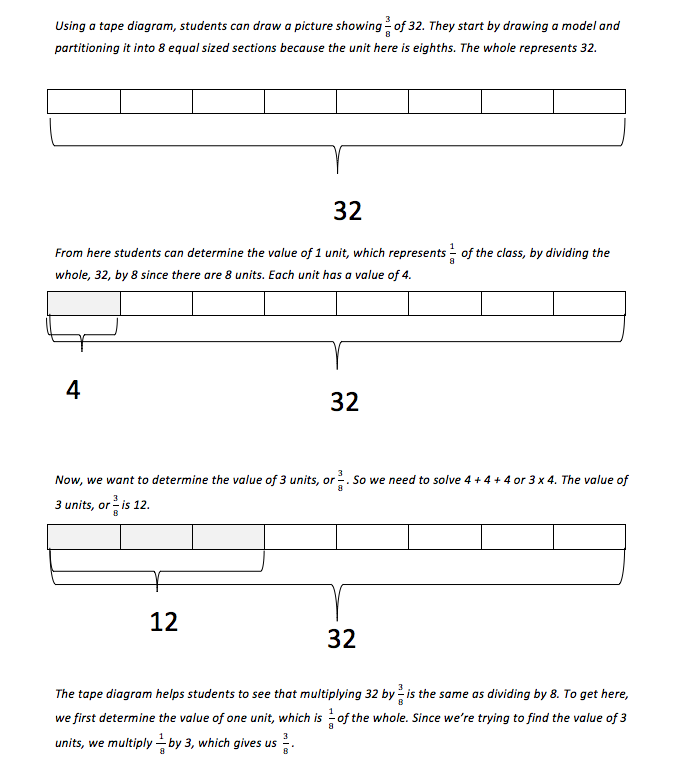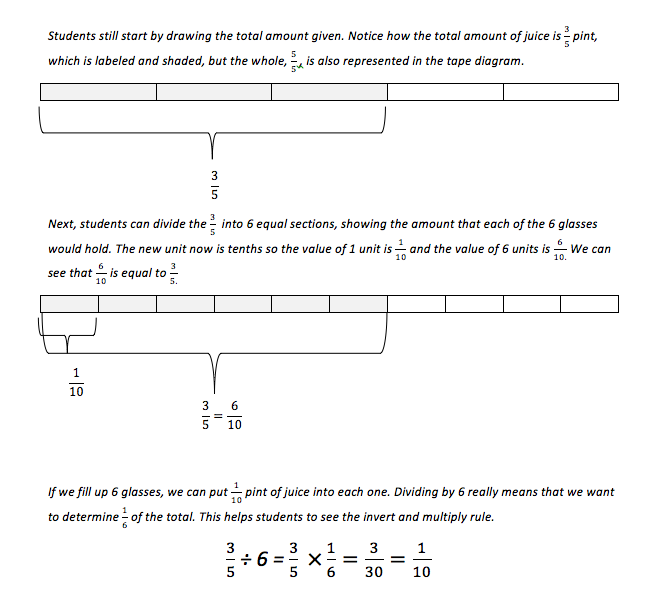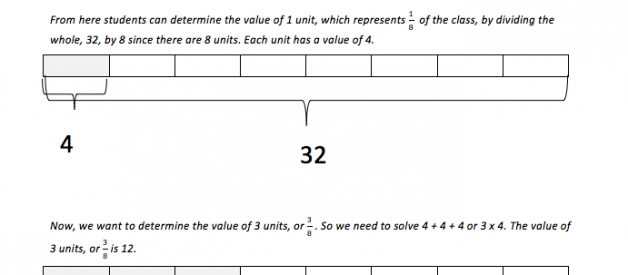(Part 1)
Aha! Moment
In my 10 years as a 7th and 8th grade teacher, I never once saw a tape diagram. I was hesitant to use this model, but as I began to really study tape diagrams, and got the chance to use it with students of all ages I was amazed at its simplicity and beauty. Tape diagrams can help students break down word problems by allowing them to write an equation or number sentence to represent the situation.
Let?s take a look at some examples of just how meaningful a tape diagram can be in your classroom. Imagine your 5th grade students solving this problem without a model:
There are 32 students in a class. Of the class, 3/8 bring their own lunch. How many students bring their lunch?(Grade 5, Module 4, Lesson 6)
If this fraction were a friendly or familiar fraction such as, or , students would typically have used mental math and been successful at solving this problem. But when faced with a fraction such as 3/8, students generally rely on remembering an algorithm or look for key words to determine which operation to use. Alternatively, a tape diagram allows students to visualize the problem and develop their strategy. Using a tape diagram, students can draw a picture showing 3/8 of 32.
They start by drawing a model and partitioning it into 8 equal-sized sections because the unit here is eighths. The whole represents 32.

Tape diagrams can also help students to see the difference between this 5th grade question asking students to multiply by a fraction and this 6th grade question asking students to divide a fraction by a whole number. They even help students divide fractions by fractions later on in Grade 6 Module 2.
3/5 pint of juice is poured equally into 6 glasses. How much juice is in each glass?(Grade 6, Module 2, Lesson 1)

1/10 pint of juice is in each glass.
The beauty of the tape diagram is that students will not be memorizing rules that they don?t understand. A memorized rule can?t help a student if they don?t remember how to use it or how to apply it to different scenarios. On the other hand, tape diagrams are universal visual tools, which allow students to better understand a problem. By using them, they can become more efficient problem-solvers and eventually solve without drawing a model at all.
Be sure to check back next month as we continue the discussion of tape diagrams and their use in solving algebraic equations.
The author of this post is Grade 6 & 7 Eureka Math writer, Debby Grawn.


